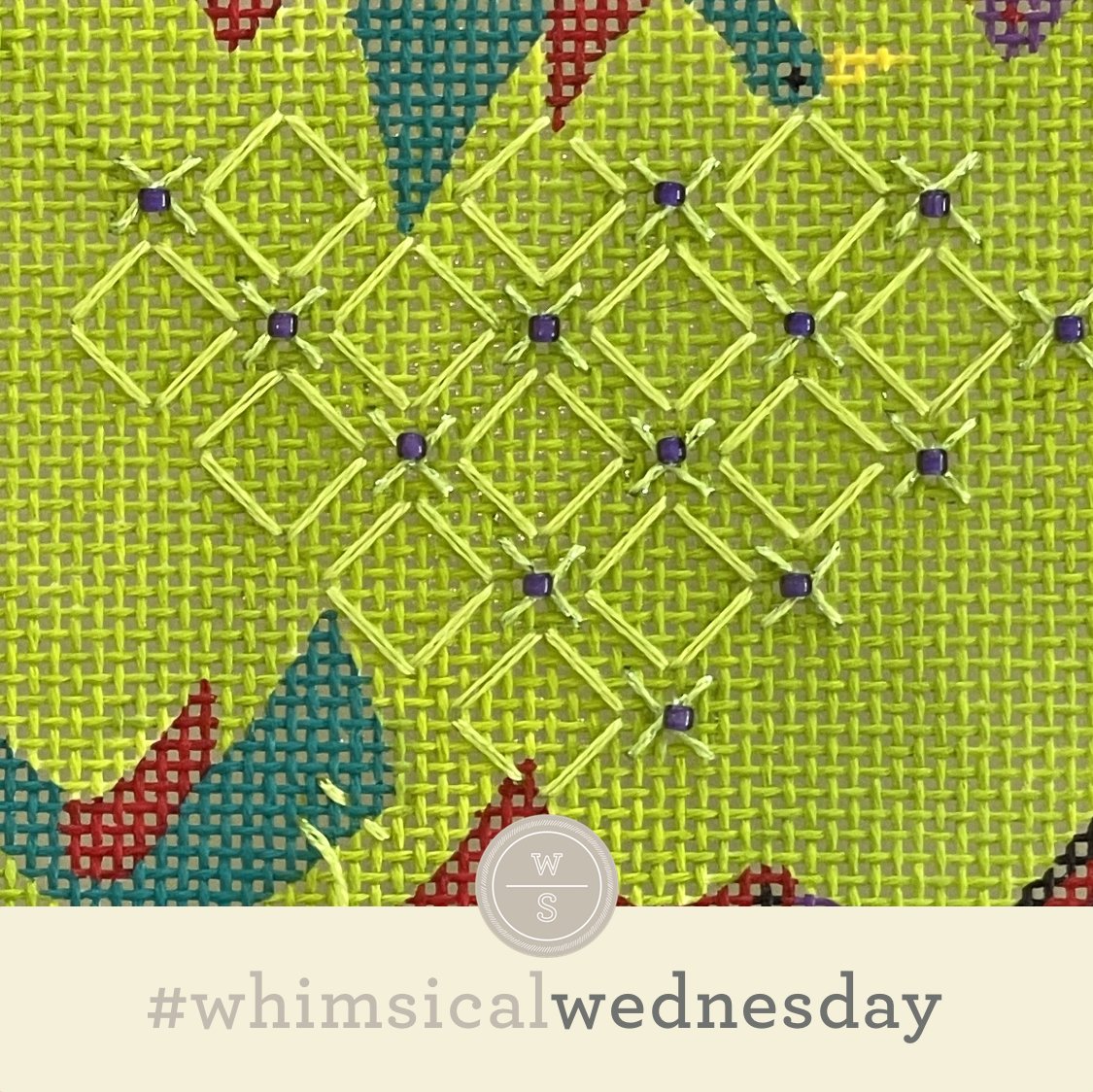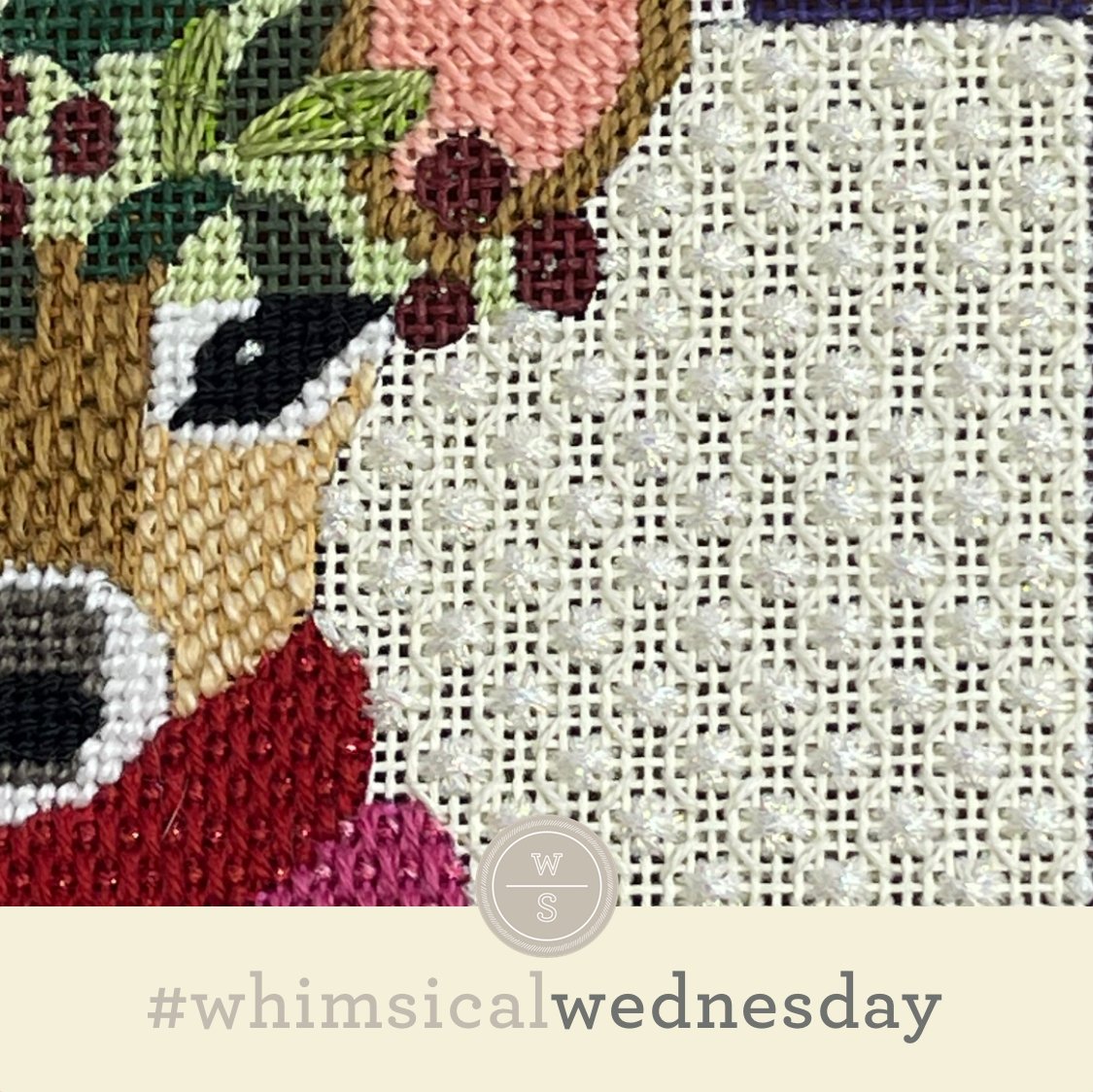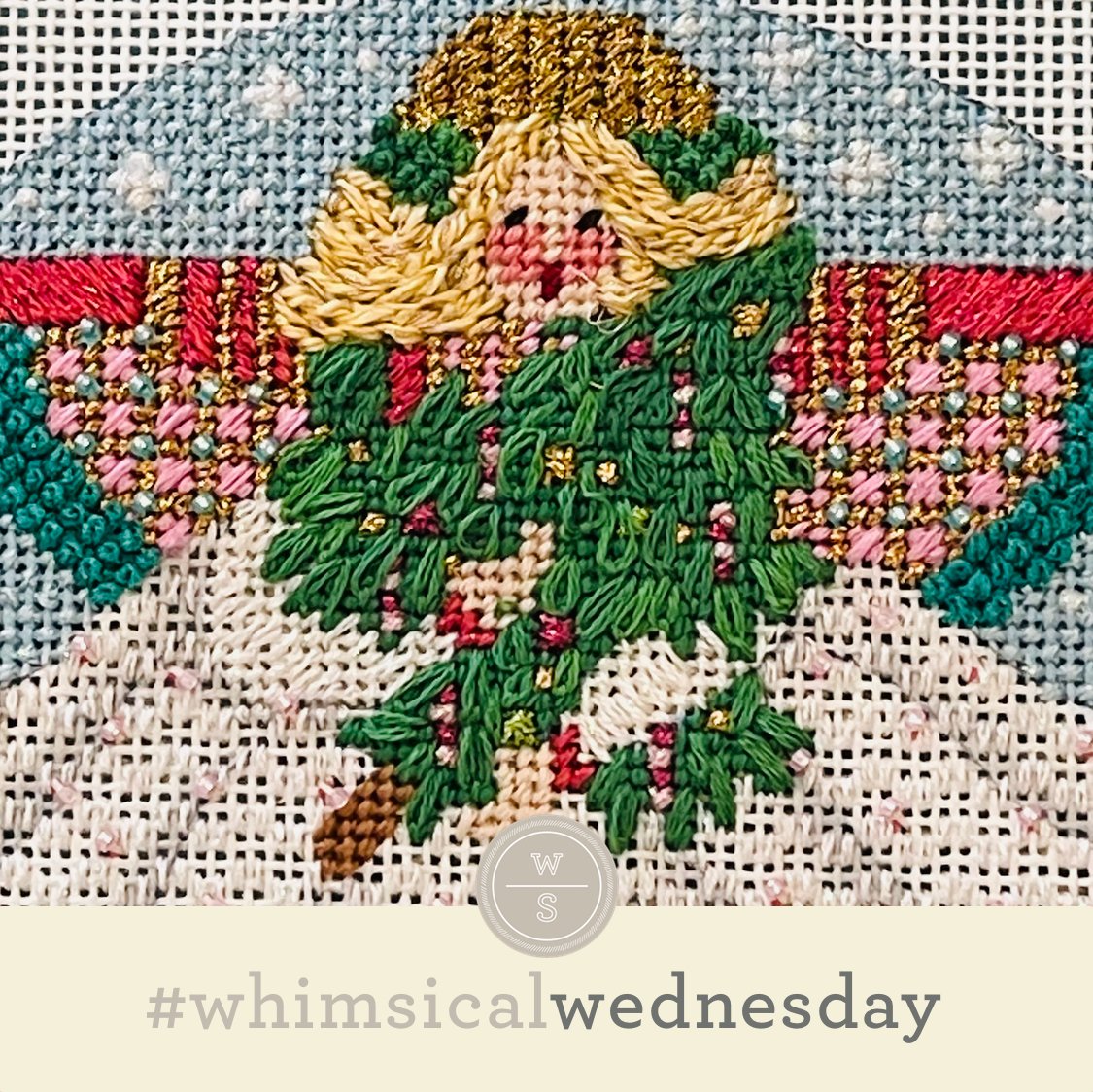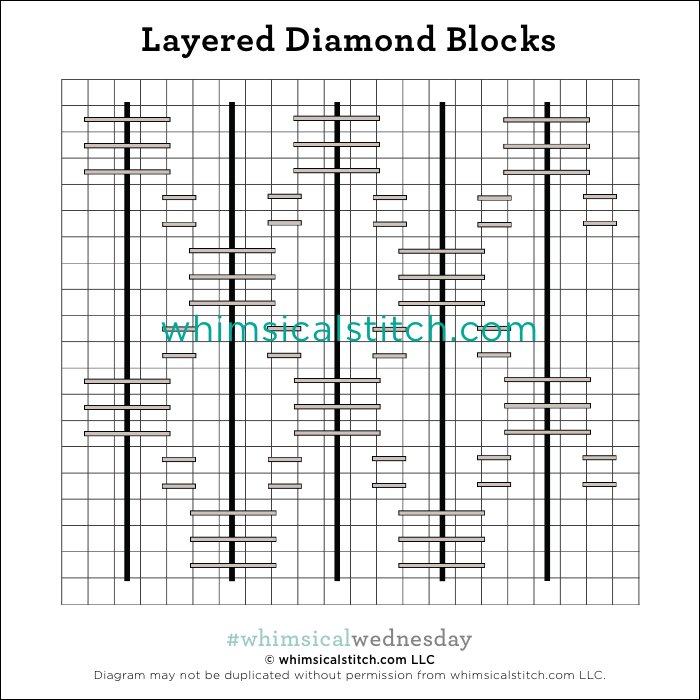It was a circuitous journey to arrive at today’s stitch, but I think it was worth it. And I learned a lot along the way.
The stitched sample is me playing with Splendor (5-ply) and Flair (black lines), Kreinik Japan Thread #5 (yellow lines), and Fyre Werks (aqua lines) on 13M.
Splendor and Flair is not a typo. Most of my stitch and thread choices involve the use of a matte thread for the primary thread with metallic accent(s). I realized that the original Splendor choice needed something more to help with coverage and I really didn’t want to add more plies. The solution was to add a layer of Flair on top of the Splendor to gain the final coverage (in both directions) I was looking for. Flair is so good for this because it can lay flat and, more importantly, spread a little for the perfect poof of coverage. Having Kreinik Japan Thread in my stash was the chef’s kiss for this stitch because it had the structure needed for the diamond trellis. (Stitching this sample took way too long, but it was so worth it.)
I’m looking forward to using versions of this stitch for a fence with wools and possibly more Japan Thread. It will also make a beautiful bedspread with Alpaca (black lines), a Kreinik Metallic (yellow lines), and Flair (aqua lines). Substituting an oversize bead or small pearl for the Upright Cross is a fun variation to consider for clothing or purse, along with silk floss for the black lines and a Petite Silk Lame for the yellow lines.
These stitch diagrams, along with all other #whimsicalwednesday and #smallspacesunday stitch diagrams, can also be found on a Pinterest board here. Be sure to follow whimsicalstitch.com on Facebook, Pinterest, Instagram, and Twitter.
If you like what you see on this blog, there's more. Mary’s Whimsical Stitches is a series of three books offering contemporary how-to collections of more than 250 stitches (in each volume) for all stitchers, regardless of skill level. All books include updated and sequenced diagrams from this blog plus a collection of all-new stitches from private lessons and other class projects. All three books include chapters on Balanced, Diagonal, Layered, Oblique, Small, and Straight stitches. Volume 1 also includes a chapter on Borders. Volume 2 includes a chapter on Beading, and Volume 3 includes a chapter on Tent Pattern Stitches. Any or all are a great enhancement to your stitch library. Visit here to find a needlepoint retailer that carries my books.
Also, you can download for free the first chapter from my first book which covers basic needlepoint stitches and stitch compensation techniques along with new top-line information on needlepoint materials and tools, how to handle threads, and other helpful needlepoint resources.
whimsicalstitch.com also sells Stitch Guides and Stitch Concepts for Melissa Shirley Designs, Zecca Designs, Sandra Gilmore, Purple Palm, Maggie, and Penny MacLeod, and many more. Click here to see the newest guides and click here to see the entire collection.
I hope you have the perfect spot for this stitch! Please enjoy! Have a wonderful #whimsicalwednesday!
A Note about Diagrams
I use color in diagrams to make them as clear as possible. The primary function of different colored lines is to illustrate a stitch sequence. For example, layering of colors demonstrates you add them in that order. They can also provide ideas on how to integrate additional threads (one line for each color). Or, you can use the same thread for all color lines. That's where I encourage you to use your imagination for the space you are stitching!

























